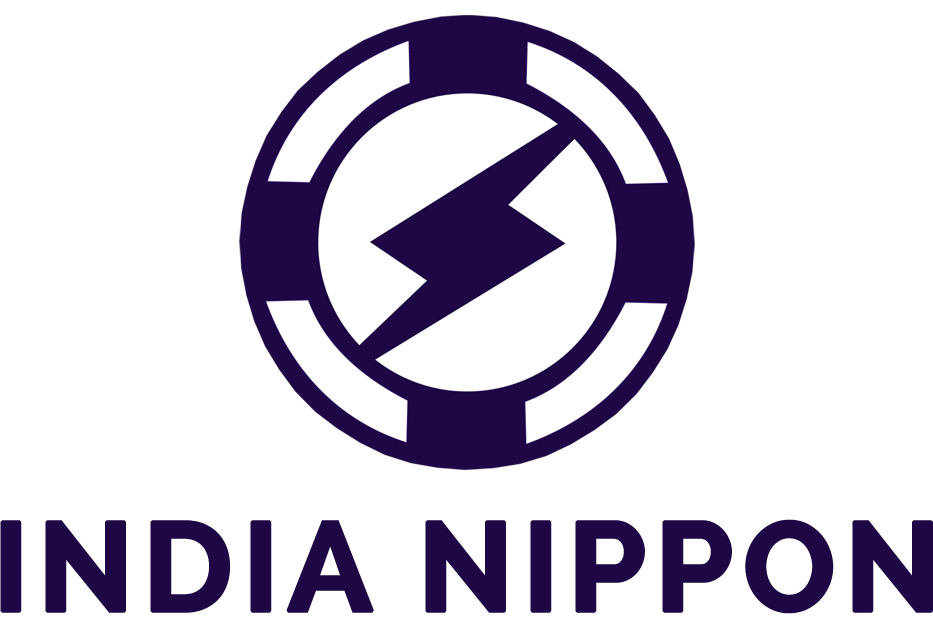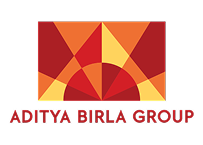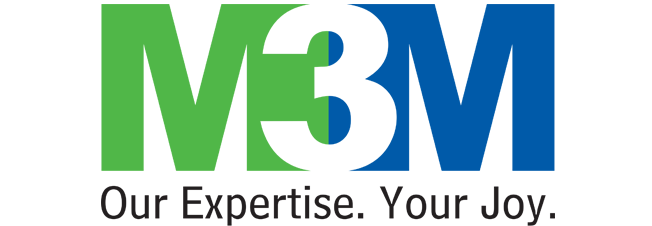Procol • October 14, 2025
Optimizing procurement in the chemical industry
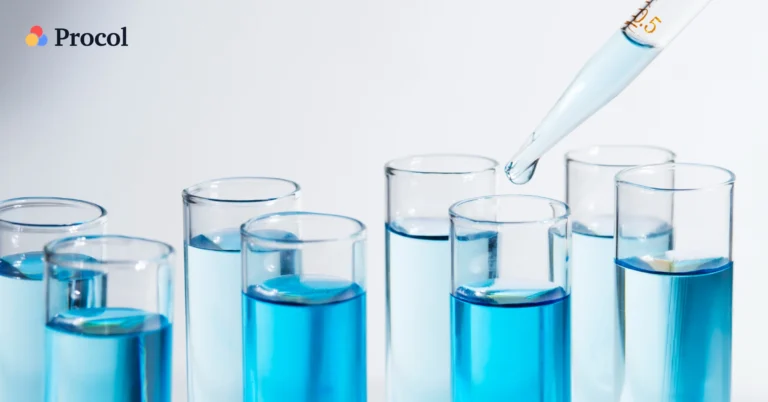
Procurement in chemical industry i.e. buying chemicals for a business is a careful task that requires investigation, compliance checks, and precise implementation. While the task might seem simple, it may end up being complex without the necessary tools. From obtaining certified, reliable suppliers to managing prices and meeting safety rules, many things can go wrong.
Within chemical companies, procurement issues tend to worsen. Unpredictable raw material prices, strict regulations, and short suppliers can hamper operations and add costs. Here is a walk-through of the common issues chemical businesses face today, the causes for these issues, and how to handle them, courtesy of this blog.
What is procurement in chemical industry?
Procurement in chemical industry is the process of acquisition, purchase, and control of raw materials, intermediates, and finished goods necessary for production or resale. Procurement in the chemical industry is greatly sophisticated as a result of dangerous materials, high safety and environmental norms, and ever-changing price instability. It comprises supplier qualification, contract negotiations, cost minimization, and global standards compliance. The aim is to meet the lowest cost but to create a secure, compliant, and continuous supply base for supporting operational effectiveness, reducing risks, and ensuring business continuity.
Types of procurement in the chemical industry
| Title | Description |
| Direct Procurement | Involves purchasing raw materials, intermediates, and chemicals that are directly used in production.
Examples: solvents, polymers, catalysts, active ingredients. Critical because quality and timely supply directly impact product output and safety standards. |
| Indirect Procurement | Secondly is the indirect procurement that significantly covers goods and services not directly part of the final chemical product but essential for operations.
Examples: safety gear (PPE), lab equipment, IT systems, facility maintenance, logistics services. Ensures smooth and compliant day-to-day operations. |
| Goods Procurement | Focused on acquiring tangible items, both raw materials and finished products.
Includes bulk chemicals, packaging, or spare parts for chemical plants. |
| Services Procurement | Involves outsourcing specialized services needed for chemical operations.
Examples: waste management, regulatory compliance audits, third-party logistics, laboratory testing. |
| Global Sourcing (Strategic Procurement) | Many chemical companies procure across borders to access competitive pricing, rare raw materials, or specialized suppliers.
Requires careful risk management due to global regulations, fluctuating exchange rates, and transportation safety standards. |
| Sustainable/Green Procurement | Growing trend where companies prioritize eco-friendly and compliant suppliers.
Focus on renewable raw materials, lower carbon footprint in logistics, and adherence to ESG (Environmental, Social, Governance) standards. |
Top 15 benefits of chemical procurement software
Over 60% of companies report that outdated procurement processes directly increase costs by 5–15% of total spend. In today’s competitive market, procurement software is a tool, it’s a strategic partner that helps businesses save money, become more efficient, and future-proof procurement by digitizing and automating it. In the chemical industry, the procurement process is complicated. It has rigid regulatory requirements, fluctuating raw material prices, handling hazardous materials, and numerous supplier dependencies. Software simplifies and optimizes this process by bringing all phases of the procurement process, from sourcing to payment, onto one digital platform.
Chiefly, the benefits are:
1. Cost savings
Firstly, the main benefit of using procurement software in the chemical industry is cost savings. The costs of raw materials can vary often, and without a proper system, businesses can overpay for these items. Procurement software helps companies to achieve the best pricing while still obtaining quality.
2. Faster procurement cycles
Delays in chemical orders can halt production lines and possibly result in lost income. The automated procurement process accelerates sourcing, enabling chemical producers to maintain common competitive edge and meet customer needs in a timely manner.
3. Improved compliance
One of the most important factors in operating a chemical business is compliance. Procurement software helps to ensure that every purchase is made in compliance with safety, environmental, and industry codes, which minimizes the risk of fines and subsequently plant shutdowns.
4. Real-time spend visibility
In a business where even a rupee counts, transparency in procurement costs is essential. Live dashboards make it simpler to track budgets, spot discrepancies, and also exercise control over funds.
5. Centralized supplier management
Chemical companies generally have various suppliers in various categories. Centralization of the information makes it more transparent, communication simpler, and the evaluation of the suppliers quicker and easier.
6. Better quality control
Raw material quality directly impacts the final chemical product. Procurement software allows monitoring and assessment of supplier performance for repeat, high-quality deliveries.
7. Greater data accuracy
Even the smallest mistake in procurement documents can be very expensive to correct. Hence, the automated processes ensure accurate purchase orders, invoices, and supplier details.
8. Streamlined approvals
There are various levels of authorization that slow down procurement in the chemical industry. Therefore, the automated steps increase decision speed without slowing down compliance or safety reviews.
9. Inventory optimization
Stockouts stop production, but excess stock can be unsafe. Procurement software helps maintain optimum inventories to ensure smooth production flow.
10. Risk management
From delays in transportation to defaults by suppliers, procurement risks for chemicals are gigantic. Predictive software detects, tracks, and manages such risks from affecting operations.
11. Predictive insights
Data has become an important differentiator. Undeniably, procurement software uses history and market data to predict demand, supplier reliability, and price changes for better planning.
12. Global sourcing efficiency
Importing chemicals overseas can be made challenging, i.e., by compliance, logistics, and currency factors. Procurement platforms facilitate these steps to make it easy for effortless overseas transactions.
13. Audit readiness
Audits are common in chemical manufacturing. So, procurement software keeps all documents organized and prepared for audits to help companies be audit-ready.
14. Custom reporting
Every business has unique procurement KPIs. Custom reporting tools help chemical companies track the specific metrics most relevant to them.
15. Sustainability tracking
As ESG targets gain prominence, procurement software helps companies measure and track the sustainability practices of suppliers according to their conformity with green procurement policy.
Procol’s procurement software is not just a platform; it is a strategic advantage that ensures cost control, compliance, and process optimization while reducing workload.

What are the challenges in procurement for the chemical industry?
In the chemical industry, procurement cycle is about working on a high-stakes, and chemical sourcing strategy. From volatile prices to stringent regulations and shipment of hazardous materials, the smallest mistake can cost millions. Many firms are still stuck with outdated systems, delayed approvals, and spread data, making the process more complicated than it has to be. That’s where Procol comes in but first, here’s what procurement teams have to contend with before they can use Procol.
| Challenges | Description |
| Volatility of raw material prices | Unless the vendor comparisons and live price tracking are available, chemical buyers are at the mercy of market change. Budget-busting becomes the new normal, and purchasing teams miss opportunities to negotiate good deals. |
| Regulatory compliance | It is prone to human error to track licenses, safety approvals, and environmental reporting manually. |
| Narrow supplier base | Thirdly qualifying and finding suitable chemical suppliers is normally slow and unbalanced. Procurement teams tend to work with the same vendors, which creates unnecessary costs and missed innovations. |
| Long lead times | Approval processes are bogged down in email trails, and manual RFQs lengthen procurement times. Chemical companies witness late deliveries and increased expedited charges. |
| Inconsistency of quality | Vendor quality issues are hard to track with no central data. The transparency into supplier performance would have caught low-purity shipments prior to causing manufacturing issues. |
| Hazardous transportation safety risks | Safety lapses can occur from tracking dangerous shipments manually. Compliance relies on phone calls and paper records, which are inefficient and risky. |
| Inventory imbalance | Overstocking with hazardous chemicals or stock dwindling in the course of making it stops production. Teams guess instead of knowing when and what to buy. |
| Data silos and invisibility | Spreadsheets for supplier data, email contracts, and chat groups for prices create disorder. |
| Manual inefficient processes | Old RFQs and approvals hold back sourcing. It reduces weeks of work to days via automated bidding, instant comparisons, and electronic contracts. |
| Supply chain disruptions | When a supplier ceases operations, manually searching for alternatives consumes valuable time. |
| High procurement costs | Without spending on analytics and competitive bidding, companies may overspend unknowingly. |
| Sustainability pressures | Sourcing sustainable chemicals in the absence of supplier knowledge is guesswork. |
The chemical industry is a high-risk industry where minor procurement errors can cause expensive financial, operational, and safety implications. From unstable raw materials prices to strict compliance and extended lead times, these issues are exacerbated further when business operations rely on manual coordination and legacy tools. Procol also helps chemical manufacturers overcome these constraints by digitalizing procurement, automating workflows, ensuring compliance, and providing real-time visibility for better decision-making.

How does Procol help in the procurement of the chemicals industry?
Procurement in chemical industry is totally unique compared to any other trade. It’s not merely about buying the product at the lowest price, but maintaining safety, compliance, and reliability at all stages. Procol’s innovative procurement platform assists in addressing the particular demands of the chemical procurement process, all with a thinking digital-first approach that minimizes risk, manages costs, and accelerates speed.
1. Visibility in real
The real-time dashboards allow teams of procurers to monitor each purchase order, each shipment, and each vendor status in real time. Blind spots in the supply chain are a thing of the past. Managers can immediately view if there are delays, shortages, or cost shifts, and they can step in for corrective action before it affects production.
2. Automating compliance
Compliance is a top priority in chemicals due to hazardous goods classification and strict environmental regulations. We automate compliance by integrating safety standards, regulatory and statutory needs, and quality certificates into the procurement process. The automation also helps lower the risk of offenses and expensive recalls.
3. Sourcing acceleration
Thirdly the conventional procurement procedures take weeks to procure specialty chemicals from several suppliers. The AI-driven RFQs and e-auctions simplify the entire process by sending several suppliers the option to bid against one another simultaneously. This creates competitive pricing and expedited delivery without sacrificing quality.
4. Cost optimisation
Uses advanced spend analytics to enable businesses to determine potential for savings by categories. Subsequently, with analytical prowess to evaluate supplier performance, historical price ranges, and volumes, teams can utilize price negotiation on the basis of improved rates and volumes or just consolidating their suppliers and reducing wastage. All of which finally result in specific cost savings year to year.
5. Supplier performance management
Vendors vary in the degree of performance in on-time delivery, product quality, compliance with safety, and risk management. We offer firms data-driven analyses of vendor performances in order to enable them to make good choices regarding which vendors they should keep, grow, and replace. With time, firms are able to build a foundation of high-quality, dependable suppliers.
6. Improved collaboration
Chemical procurement engages numerous departments (from R&D to production to logistics and compliance). A centralized communications, documents, and approvals platform is offered so aligned teams are working toward the same goal. This prevents back-and-forth emails, accelerates decision time and pipeline length, and ensures procurement timelines don’t clog up.
7. Risk minimization
Supply breakdowns might have severe impacts on chemical production which further aids in identifying risky suppliers, incorrect supply paths, or excessive dependence on a sole supplier at the initial levels.
8. Inventory optimization
Having too much inventory can keep working capital tied up, while too little or none at all can stop production. Procol’s demand forecasting solution can help chemical companies to keep their stock levels at the correct volumes – maximizing storage costs nothing and having stock on hand whenever needed.
9. Sustainable procurement
Sustainability is set as a fundamental business deliverable. We can specifically assist businesses in choosing those vendors that are up to environmental standards and in line with their ESG goals. By assisting businesses in choosing approved vendors, we assist organizations in addressing regulated requirements and enhancing brand reputation among stakeholders and customers.
10. Evidence based decision making
Simultaneously, we can also render guesswork an artifact. It gives its users, who are procurement professionals, the level of detail necessary, such as spend analysis, supplier scorecards and market intelligence, which will enhance decision-making processes later on. This, in turn, allows procurement teams to make better decisions that are confident and strategic in terms of cost targets and operational needs.

Chemical procurement procedure for raw materials and MROs
Procurement in chemical industry is an organized system that ensures that raw materials and associated items are purchased correctly, compliantly, and affordably. This may include direct materials (solvents, catalysts, intermediates), as well as indirect items (not limited to safety equipment, laboratory equipment, or spare parts – in other words, MRO).
The procurement process typically starts with a clear definition of the requirements as it relates to production plans, and applicable quality specifications, and strong safety precautions because one small change in purity could impact the end product. Procurement resources prequalify suppliers to examine supplier qualifications in areas such as certifications, technical capabilities, delivery performance and qualities associated with environmental and safety compliance. Once a shortlist of potential suppliers is established, procurement resources send out RFQs (requests for quotation) to prompt competition and hopes for fast turnaround time, regardless of whether a formal request was issued. Even with individual/multiple supplier qualification established, during the early stages of procurement, using advanced chemical supply chain software tools will enable food procurement teams to efficiently compare bids against supplier performance history, negotiate procurement contract management terms and prices for cost/quality/timely performance.
Upon selection of suppliers, purchase orders can be issued with automated compliance checks for hazardous material handling. Once delivered, item quality tests will be conducted prior to entering production. Supplier performance monitoring will happen throughout the entire process and, even after the purchase order is delivered, span the entire lifecycle of the product from production to disposal, making comparisons becomes easier and contribute to long-term reliability.
Basically, procurement in the chemical business is about blending technology, compliance, and strategic planning to optimize buying, eliminate risk, and deliver the right materials at the right time.
Conclusion
Procurement in chemical industry is a strategic process that greatly impacts safety, compliance, cost management, and business continuity. It is a comprehensive process that must be planned ahead of time. Therefore with price instability, regulation uncertainty, and great safety expectations, outdated, manual processes cannot meet today’s expectations. By using procurement software like Procol, organizations can centralize supplier management, automate compliance, enhance cost management, and provide overarching visibility throughout the supply chain. Digital transformation in procurement enables long-term competitiveness and resiliency in the chemical industry, not only operational efficiencies.
Frequently asked questions
What is procurement software?
A procurement software is a digital, cloud-based platform that simplifies, integrates, and automates every step of the procurement cycle, including the initiation of purchase requests, bidding, approval of purchase orders, payment of invoices, and tracking of deliveries. With Procol, procurement no longer relies on cumbersome emails and spreadsheets. It combines all procurement processes, making them faster, precise, and economical.
What are the types of procurement in chemical industry?
These types are defined as follows:
Direct procurement: Raw material and catalyst supplies required in the manufacturing processes.
Indirect procurement: Maintenance, repair, and operation supplies, safety apparel, and laboratory instruments.
Procurement of goods: Purchased chemical products and their containers, and other chemical products.
Procurement of services: Logistics, waste management, and compliance monitoring procurement.
E procurement: Chemical supply chain software-assisted sourcing.
What is chemical sourcing?
Chemical sourcing is a process that focuses on selecting the right suppliers for chemicals and raw materials that meet the required standards for production, quality, and compliance necessary for the business. It encompasses supplier identification and selection, contract terms, freight cost negotiation, safety checks, and securing transportation, often through digital platforms, for the needed products and services. Chemical supply chain software aids in ensuring the lowest cost, optimal quality, and prompt delivery.
What are the procurement issues in the chemical industry, and how are they resolved?
By digitizing procurement with chemical supply chain software, diversifying suppliers through a strong sourcing strategy, automating compliance, leveraging data analytics, and improving supplier collaboration, solutions that make this faster, safer, and more cost-efficient.
Explore more from Procol
Discover expert tips, how-to guides, industry insights, and the latest procurement trends.
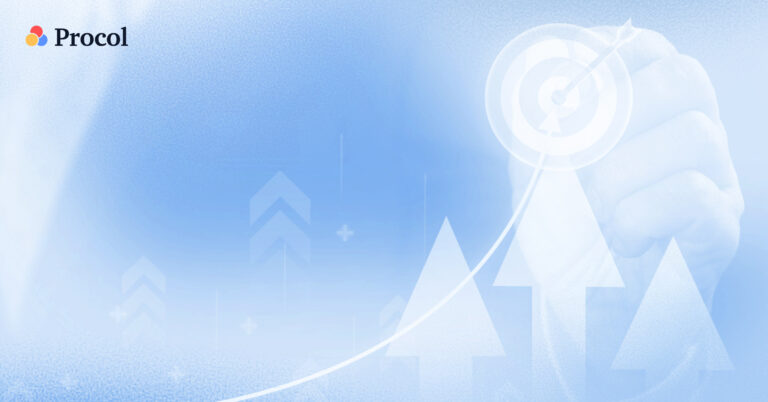
Streamline your sourcing process with eRFx software
Organizations are embracing tools for digital procurement, such as eRFx, to...
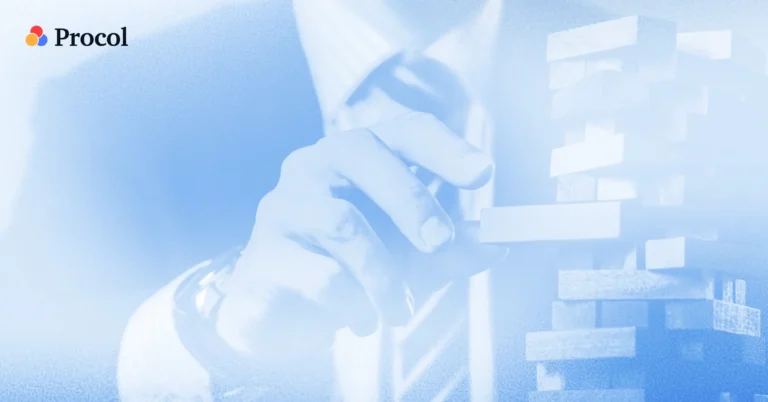
Vendor risk management (VRM): A complete guide 2025
Vendor risk management is important for creating resilient and effective supply...
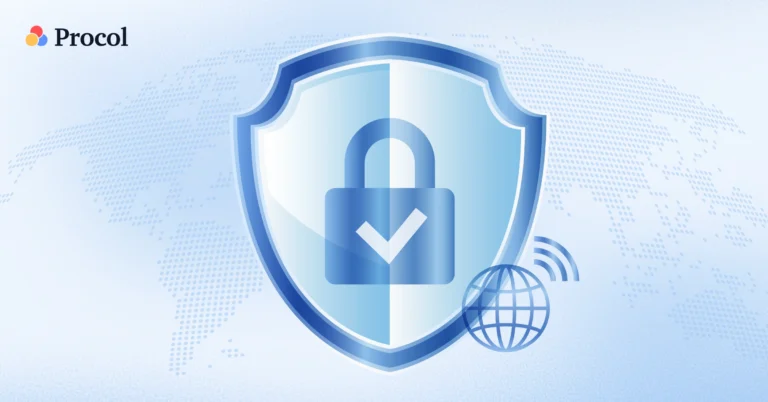
What is supply chain risk management (SCRM)? | Definition & steps
In an increasingly interconnected world, organizations rely on smooth supply chain...
